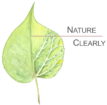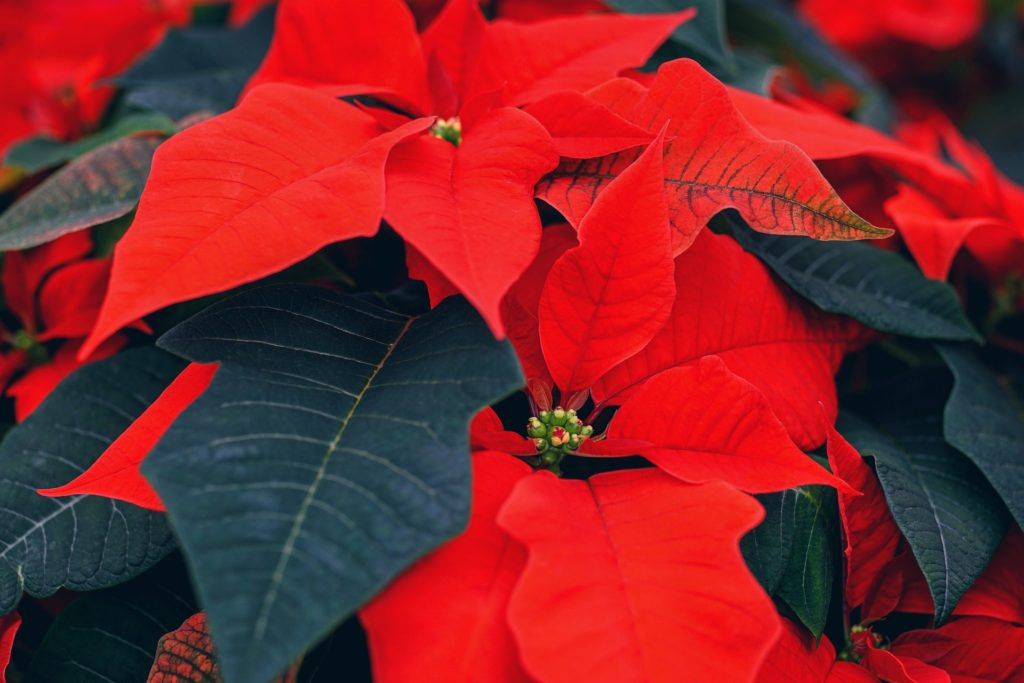You’ve probably seen this distinctive plant in stores and garden centers during the Christmas season. What is it? Where did it come from? Let’s have a look!
The first thing you’ll probably notice is the feature makes this such an attractive plant at Christmas: those large red flowers. But wait, is that what those are? Looking closer, you see that at least the lower red “petals” are about the same size and shape as the green leaves of the plant. Moving upward along one of the plant’s stems, you’ll see that these red leaf-like structures become smaller. Where they are smallest, they form a sort of pinwheel around the end of the stem. Depending on the developmental stage of the plant, this stem tip will contain a group of very different-looking structures: some items that look like buds that may be green, yellow, and red!
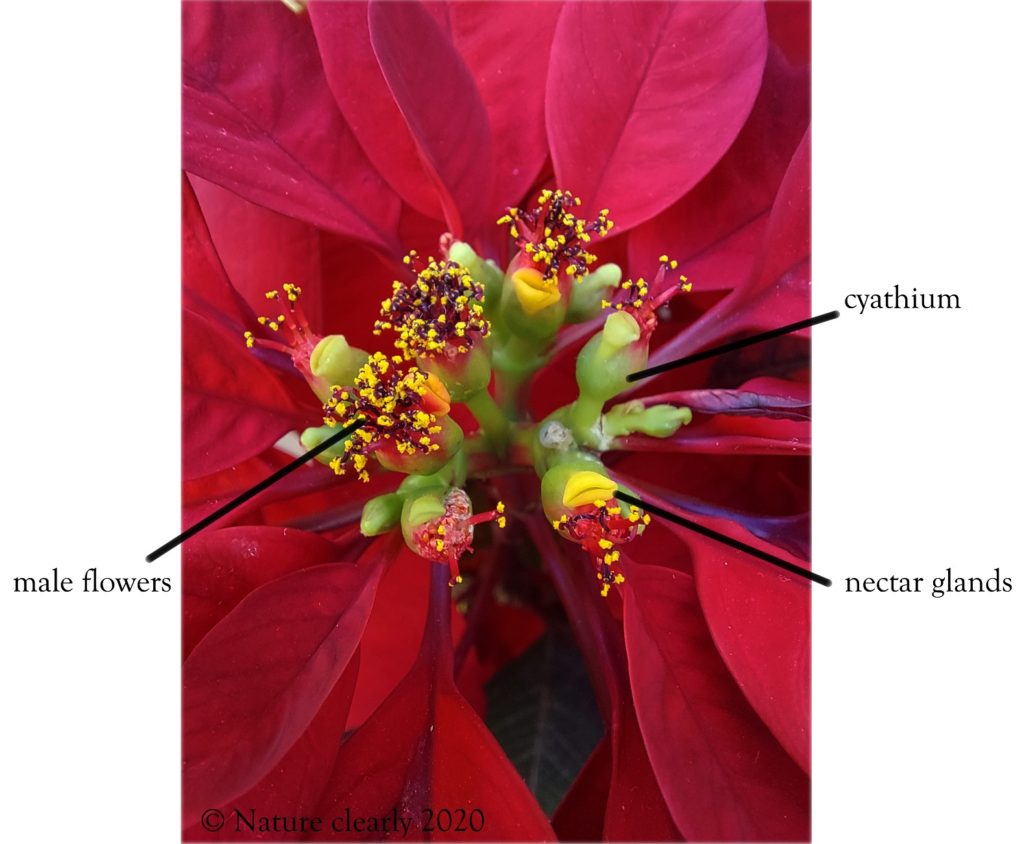
Once these bud-like structures open up, you’ll notice they have several little red filaments with yellow tips. These are stamens, the familiar pollen-carrying structures in flowers, which are the male parts. There are several male flowers inside this little bud, plus one female flower with a single ovary (which will become a seed), but there are no petals to be found! Botanists call this bud-like flower capsule with no petals a cyathium (plural cyathia).
Another strange feature of this cyathium is something that looks like a pair of tiny yellow lips just below the tip on one side. These are glands that produce nectar, probably to entice insects to pollinate the flowers.
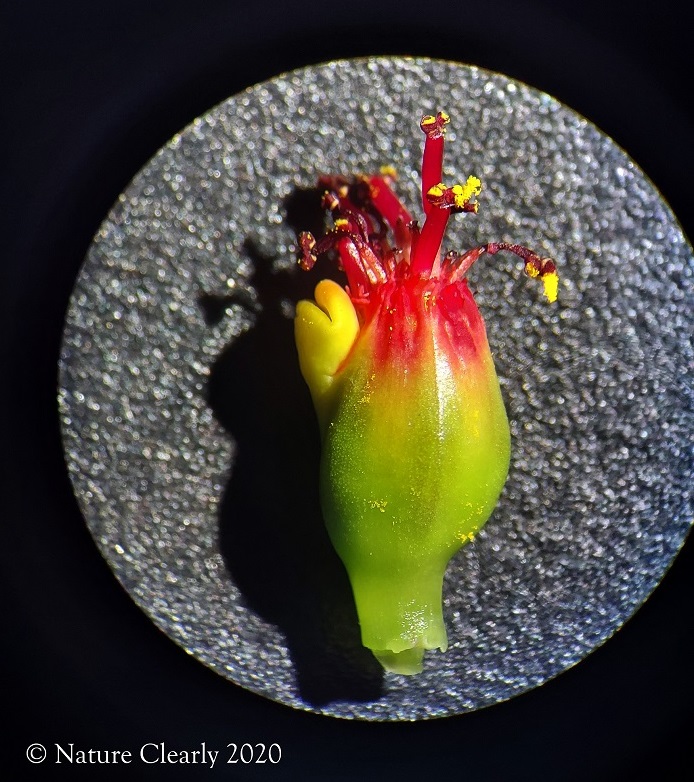
Okay, back to those red leaf-like structures. We know now that these are not the flowers, and they are, indeed, leaves! When plants have leaves that surround the flowers and are modified in some way, we call these bracts. The poinsettia’s red bracts only appear when the plant is ready to flower.
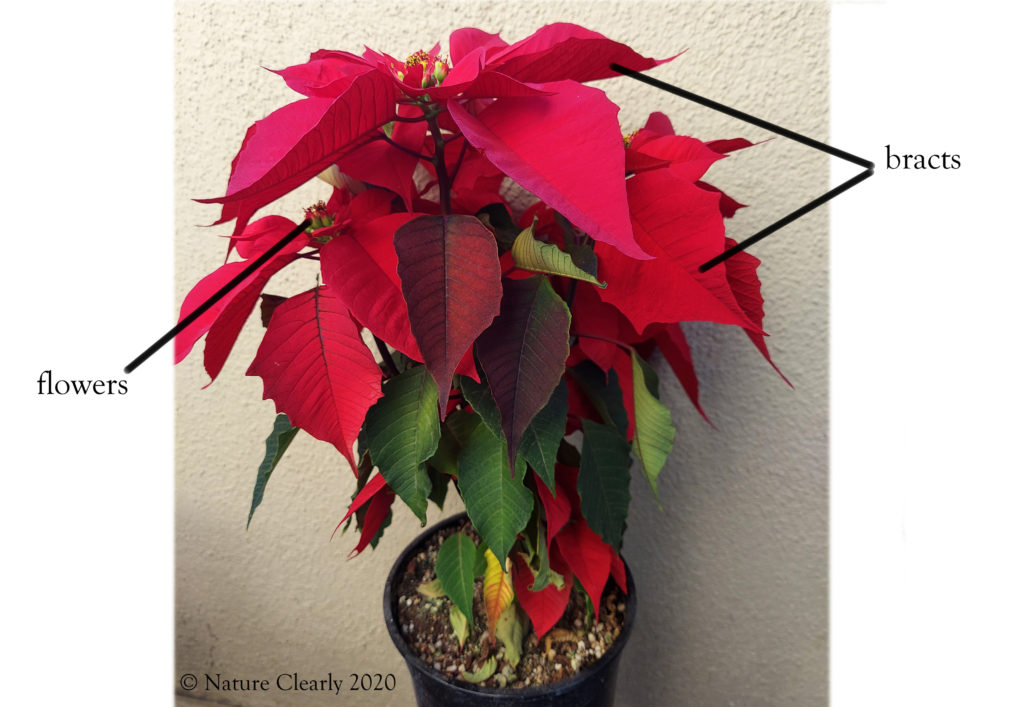
Here’s something to try: put on a pair of rubber gloves and break off one of the leaves of the plant. Notice what flows at the site of the break. Milky white latex! The presence of this latex led some people to believe that poinsettia plants are highly toxic to pets and people (like in many other plants with latex), but this is not quite true. We don’t recommend eating or touching this latex, though, since some people can react with a rash, and the plant is not at all tasty and can give you an upset stomach!
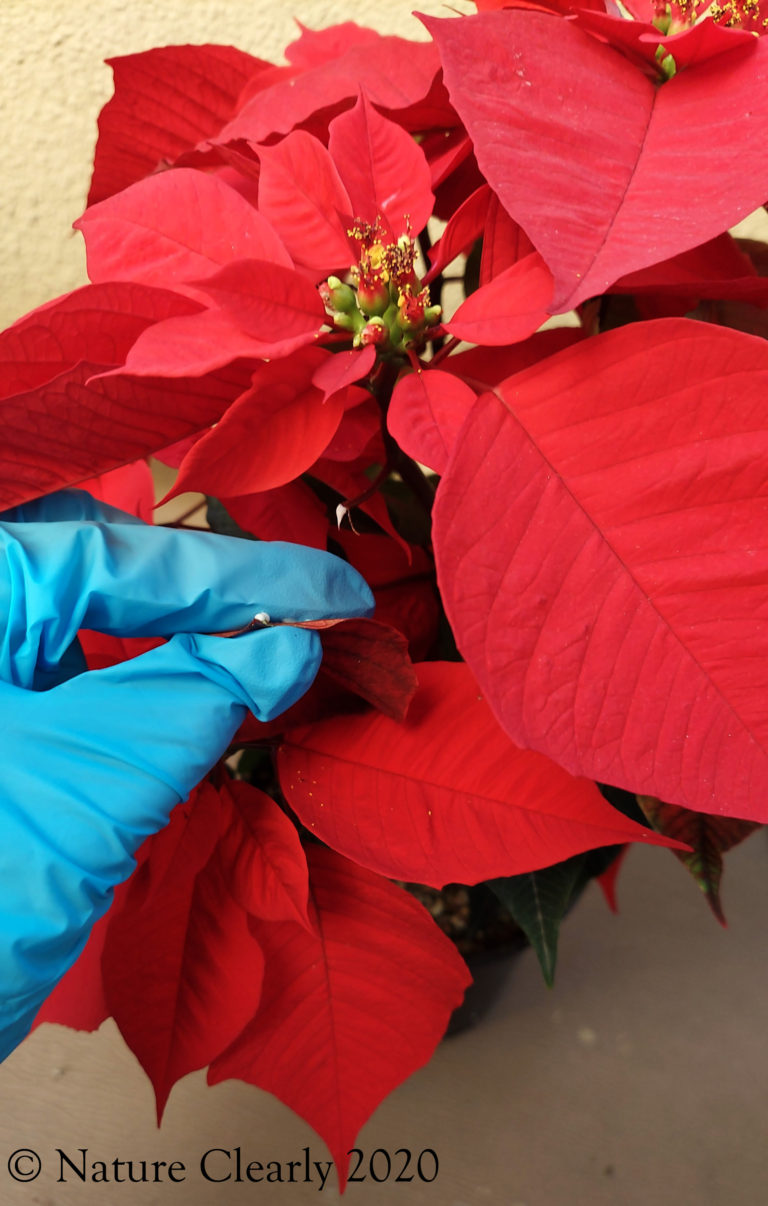
This plant grows naturally in Mexico and Guatemala, in dry tropical forests. The presence of a cyathium, along with the milky latex, led botanists to place this plant in the genus Euphorbia as the species Euphorbia pulcherrima. There are over 2,000 different species in this genus! In fact, it includes plants that look like succulents, small trees, herbs, and even some that look remarkably like cacti, but all of them produce cyathia and milky latex; some of these Euphorbia even display other types of colorful bracts forming “false flowers”. We encourage you to explore these at this site.
